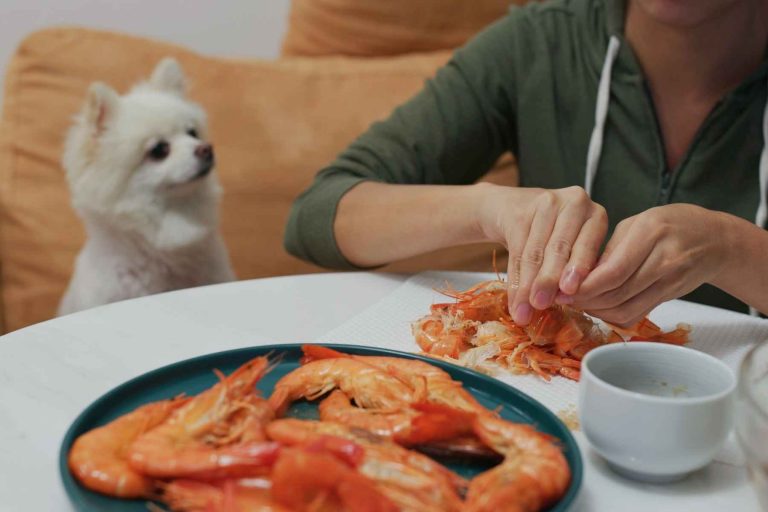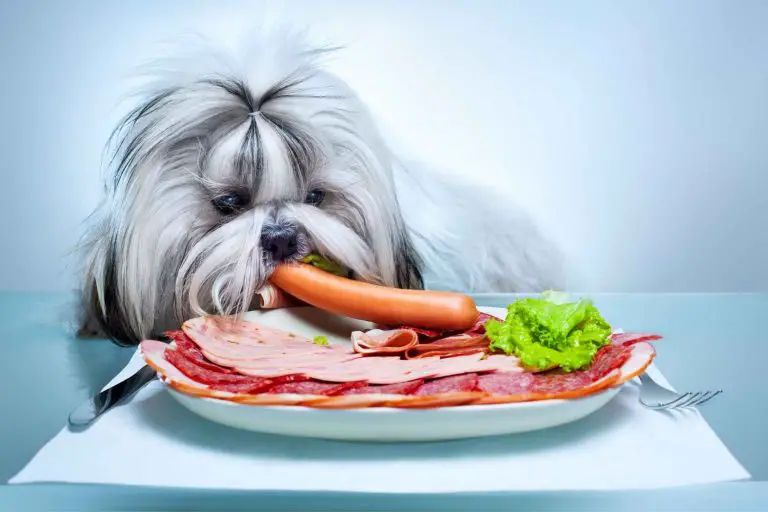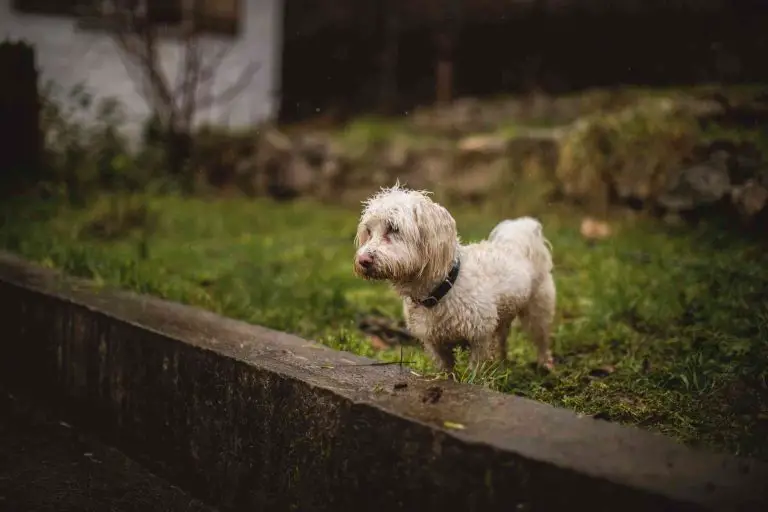Can Dogs Eat Peanut Butter?

Peanut nut butter and jelly sandwiches are a classic food, and the versatility of peanut butter means that it extends its usage to a range of other dishes, but how healthy is it for your dog?
In many cases, dogs can eat peanut butter (and might really enjoy it). But, you should always check the label before allowing your canine a lick of this tasty spread, as some varieties contain xylitol, an artificial sweetener that is toxic to dogs. And, as with all treat food, this is something you should only allow your dog to eat in small quantities.
Keep reading to discover the pros and cons of giving peanut butter to your dog, and learn whether or not they too can enjoy a bite of your PB&J sandwich.
Can Dogs Eat Peanuts?
Dogs can eat small amounts of peanuts, though you need to be careful with the variety you choose. For example, the peanuts that come with a salty or chocolate-flavored coating are unsuitable for your pup in any amount.
Keep their peanuts free of flavors and seasoning, and ensure you remove the shells beforehand to prevent choking hazards.
If you want to offer your dogs peanuts, opt for unsalted, raw peanuts that are shell and additive-free. In addition, it’s a good idea to talk to your vet beforehand to prevent any adverse reactions such as allergies or gastrointestinal issues.
And keep these nuts as a treat rather than a staple; the calories can quickly add up to tip your dog over their daily limit.
Can Dogs Eat Peanut Butter?
Many dogs can eat peanut butter and may even enjoy the taste of this delightful spread. But, it’s essential to check the label before feeding this treat to your dog.
The most significant hazard contained in some peanut butter variations is the artificial sweetener, xylitol. This ingredient is highly toxic to dogs and can lead to seizures, vomiting, and in extreme cases, coma.
Some manufacturers opt for this sweetener as an alternative to sugar. But while it may possess some health benefits for humans, it is incredibly dangerous for your pup. The problem is that xylitol causes the insulin in your dog to rise rapidly; this triggers a decrease in their blood sugar and can be life-threatening.
The scientific name for this condition is hypoglycemia, which can affect your canine in as little as ten minutes post-consumption.
What Should I Do If My Dog Ingests Xylitol?
If your dog ingests any food containing xylitol, you need to seek professional help immediately; call the pet poison helpline for guidance. Time is of the essence, and the faster you act, the better chance that your dog can make a full recovery.
You may be able to temporarily raise their blood sugar levels by rubbing maple syrup onto the gums, but ask a professional before you administer any form of treatment to your dog.
There is no known antidote for xylitol poisoning, but a vet can administer intravenous dextrose supplementation and drugs to protect your dog’s liver.
Never induce vomiting unless given specific instructions by an expert healthcare provider.
How Should I Serve Peanut Butter To My Dog?
The simpler, the better when it comes to peanut butter. The fewer ingredients, the less chance of harmful additives or substances that could upset your dog’s gastrointestinal system.
As with any new food, begin by offering your dog a small amount. This allows you to monitor your pup for any intolerance or adverse side effects.
And peanut butter has a number of uses when it comes to your pup. This spread is a great reward to utilize in training; giving your dog a little lick after they’ve engaged in a desirable behavior helps cement that they did something good.
Peanut butter provides a great way to keep them entertained or serves as a distraction when they’re experiencing something they don’t like (such as bath time).
Is Smooth Or Crunchy Peanut Butter Better For My Dog?
You may have heard that crunchy peanut butter presents a choking hazard for your pup. But the truth is, choking on this crunchy spread is very unlikely unless you give a small puppy large amounts of crunchy peanut butter.
Depending on the purpose of your peanut butter, you may have your own preference. For example, if you’re using it as enrichment and want to spread it over something, then a smoother variety might be a better option.
However, your canine could prefer the unique texture of crunchy peanut butter, and that’s fine too.
How Much Peanut Butter Can I Give To My Dog?
No treat food should exceed 10% of your dog’s overall diet, and you need to be particularly careful with foods like peanut butter that are rich in natural fats and can quickly lead to health issues such as obesity or pancreatitis.
The best way to determine the correct serving size for your dog is to talk to your vet and get their opinion.
Is Peanut Butter Good For Dogs?
Peanut butter can be good for dogs as long as they consume it in moderation. Small amounts of this spread are a great source of healthy fats, protein, vitamin B, and vitamin E.
To provide the most significant level of nutrition to your pup, opt for unsalted, dog-specific, or homemade variations, which contain reduced sugar and salt, along with far fewer additives.
Peanut butter is an excellent treat for your canine, and because dogs love the taste of fats and proteins, there’s every chance they’ll enjoy this delicious spread.
Is Peanut Butter Bad For My Dog?
As with humans, treat foods are OK to include in your diet as long as they are infrequent and part of a balanced diet.
While peanut butter fats are natural, they’re still fat, which can quickly lead to obesity and other health issues in dogs. There’s no real difference between smooth or crunchy peanut butter; the most critical factor with either is to check out the ingredients label before consumption.
Are Dogs Allergic To Peanut Butter?
Some dogs may be allergic to peanuts, though it is a relatively rare occurrence in the canine world. Many allergic reactions are mild, but it’s best to seek advice from your vet if your canine starts to display any symptoms.
These include coughing, difficulty breathing, itchy or swollen skin, or vomiting.
Which Dogs Should Not Eat Peanut Butter?
While many dogs can enjoy the delicious flavors of a small amount of peanut butter, others will need to avoid this spread altogether.
Peanut butter is high in fat, making it unsuitable for dogs who are overweight or on a diet to maintain their weight. Plus, this spread has a relatively high salt content and can exacerbate health issues in dogs with kidney problems.
Dogs on any special diet need to be particularly careful with what they eat, particularly when it comes to human food. In these circumstances, it is often a good idea to stick to their diet plan and avoid introducing things like peanut butter, which deviate from the program.
Can My Dog Eat Peanut Butter and Jelly Sandwiches?
We know that most dogs can eat a small amount of peanut butter, but when it comes to this traditional sandwich, there are two extra ingredients that we have to consider: bread and jelly.
Plain bread is not toxic to dogs and therefore OK to consume in small amounts, but thanks to its high carbohydrate and sugar levels, this is undoubtedly a food you’ll want to keep to a minimum. Remember, bread is just empty calories to a dog and offers no form of nutrition.
And there are some limitations on the types of bread your dog can eat. Never give them bread dough as the yeast may make it prone to continued expansion in the stomach, causing various gastrointestinal issues.
And while plain white or wheat bread will be fine for most dogs, other varieties are dangerous for your canine.
One of the most significant hazards is raisins, which are often present in baked goods but are highly toxic to your dog, and the same goes for garlic. Additionally, ingredients like nuts and seeds can cause stomach issues (from their high-fat content) and also present a choking hazard.
Jelly is not a great food for dogs as it possesses a high sugar content and very little nutritional value to your pup. In addition, jelly could contain the toxic ingredient xylitol or other harmful ingredients.
But, the good news is that dogs can take a bite of your PB&J sandwich, so long as it’s just one bite. Importantly, remember to check the ingredients of each foodstuff before serving.
Final Thoughts
It’s easy to think of our fur babies as little humans; still, we must remember that animal nutrition and digestion are very different from our own. For this reason, we must source the correct information before giving our canines any human treats.
The odd lick of peanut butter is absolutely fine, as is the occasional bite of a PB&J sandwich. The critical factors are ensuring that no product contains xylitol and keeping the serving size in moderation.






